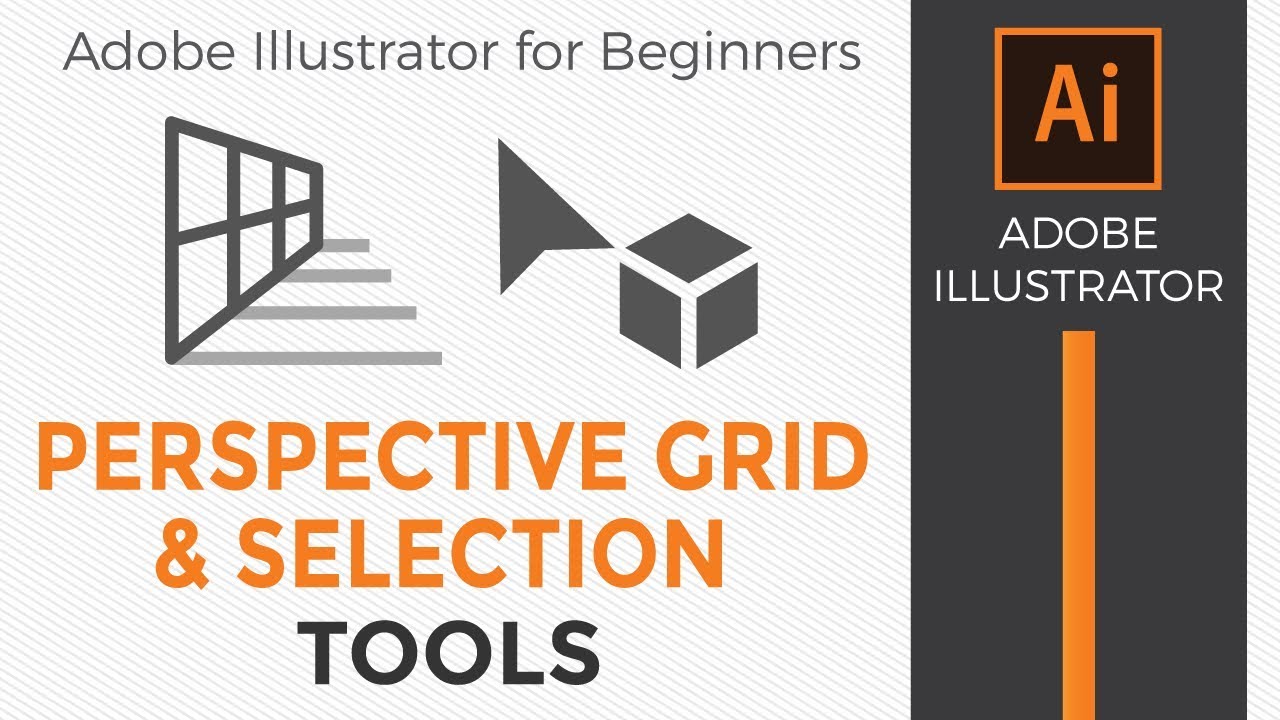
Introduction:
In the expansive universe of digital design, Adobe Illustrator serves as a cornerstone, offering an extensive toolkit to empower artists and designers to bring their creative visions to life with precision and finesse. Among its arsenal of capabilities, the perspective selection tool emerges as a dynamic feature, providing users with the ability to manipulate objects in perspective and create realistic three-dimensional compositions. Whether you’re a seasoned illustrator, a graphic designer, or an aspiring artist, understanding how to effectively utilize the perspective selection tool in Adobe Illustrator is essential for unlocking new dimensions of creativity. In this comprehensive guide, we’ll embark on a journey to explore the intricacies of the perspective selection tool, from its basic functionalities to advanced techniques for creating immersive designs.
Chapter 1: Introducing the Perspective Selection Tool
At its core, the perspective selection tool in Adobe Illustrator is a powerful instrument that allows users to transform and manipulate objects in perspective within a two-dimensional workspace. By applying vanishing points and gridlines, users can create realistic three-dimensional effects, adding depth and dimension to their designs. Whether you’re creating architectural renderings, product mockups, or illustrations, the perspective selection tool offers unparalleled flexibility in manipulating objects with precision and accuracy.
Chapter 2: Getting Acquainted with the Perspective Grid
Before delving into advanced techniques, it’s essential to familiarize yourself with the perspective grid feature in Adobe Illustrator. Accessed through the “View” menu, the perspective grid provides a visual guide for creating and manipulating objects in perspective. By adjusting the position and angle of vanishing points, users can control the depth and orientation of their designs. Take some time to explore the various options and settings available in the perspective grid panel, including grid size, spacing, and perspective plane options.
Chapter 3: Selecting and Manipulating Objects in Perspective
Once you’ve activated the perspective grid, it’s time to start selecting and manipulating objects in perspective using the perspective selection tool. Located in the toolbar, the perspective selection tool allows users to select and transform objects within the perspective grid with precision and accuracy. Simply click and drag on the desired object to select it, and then use the handles and bounding box to manipulate its position, size, and orientation in perspective. Experiment with different transformations, such as scaling, rotating, and skewing, to create dynamic compositions.
Chapter 4: Aligning Objects with the Perspective Grid
To achieve realistic perspective effects, it’s important to align objects with the perspective grid in Adobe Illustrator. Use the perspective selection tool to move and position objects along the perspective planes of the grid, ensuring that they follow the natural perspective of the scene. Experiment with using the snap to grid feature to align objects with the gridlines and vanishing points, ensuring precise placement and alignment. Use the transform panel to enter specific values for positioning, scaling, and rotating objects in perspective.
Chapter 5: Creating Depth and Dimension
One of the key benefits of using the perspective selection tool in Adobe Illustrator is the ability to create depth and dimension in your designs. Experiment with stacking objects at different depths within the perspective grid to create a sense of space and distance. Use overlapping and foreshortening techniques to create the illusion of objects receding into the distance. Experiment with adding shadows, highlights, and textures to objects to enhance the sense of depth and realism. By carefully manipulating objects within the perspective grid, users can create immersive designs that draw viewers into the scene.
Chapter 6: Adding Detail and Refinement
Once you’ve established the basic structure of your design using the perspective selection tool, it’s time to add detail and refinement to bring your composition to life. Experiment with adding additional objects, textures, and patterns to fill out the scene and add visual interest. Use the appearance panel to apply effects such as gradients, textures, and transparency to objects within the perspective grid. Experiment with adding atmospheric effects such as fog, haze, or sunlight to create a sense of atmosphere and mood.
Chapter 7: Integrating Text and Typography
In addition to manipulating objects in perspective, the perspective selection tool in Adobe Illustrator can also be used to integrate text and typography into your designs. Experiment with placing text along the perspective planes of the grid to create dynamic compositions. Use the type on a path tool to wrap text around objects or follow the contours of the perspective grid. Experiment with using different fonts, sizes, and styles to create contrast and emphasis within your designs.
Chapter 8: Saving and Exporting Your Designs
Once you’ve completed your design using the perspective selection tool in Adobe Illustrator, it’s important to save and export your work for sharing or distribution. Save your Illustrator document in a compatible file format, such as AI or PDF, to preserve the vector properties of your design. If you’re creating web-based graphics, consider exporting your design as an SVG file for scalability and compatibility with web browsers. For print-based projects, export your design as a high-resolution raster image in formats such as JPEG or PNG.
Conclusion:
Mastering the perspective selection tool in Adobe Illustrator is a journey of exploration and experimentation, offering endless possibilities for creating immersive designs that captivate and inspire. By understanding the basic functionalities, getting acquainted with the perspective grid, selecting and manipulating objects in perspective, aligning objects with the perspective grid, creating depth and dimension, adding detail and refinement, integrating text and typography, and saving and exporting your designs, you’ll be able to unlock new dimensions of creativity and bring your artistic visions to life with precision and finesse. So grab your stylus, set your sights on the canvas, and let the perspective selection tool in Adobe Illustrator become your gateway to creating immersive and captivating designs that leave a lasting impression.